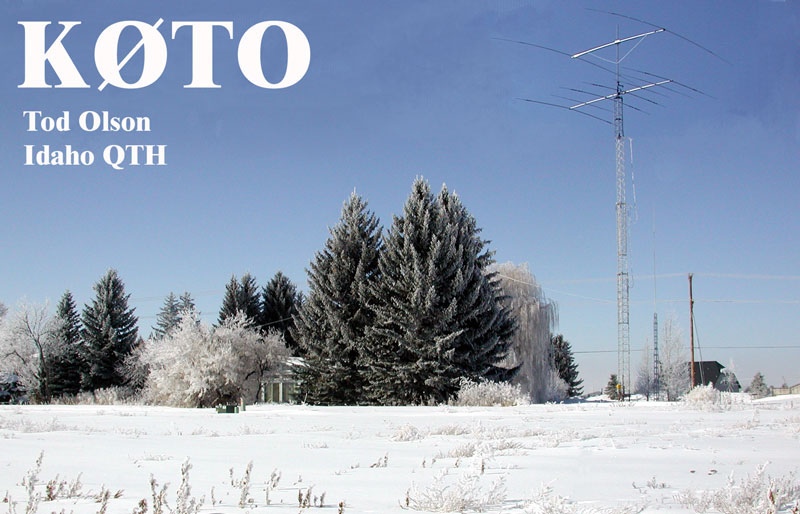
As an electrical engineer I learned that “all digital devices comprise analog components”. This has remained true even as quantum effects are now being utilized in computational logic gates (they are defined by analog wave functions).
Radio waves, especially those used by amateur radio operators, are analog signals transmitted and received by oddly shaped and configured pieces of conducting metal parts known as “antennas”. And the techniques to couple a useful signal to them are part of the arcane art and science of amateur radio. The sharing of this knowledge is a big part of the ham radio community ethos.
So I should not have been surprised to receive an email asking for help with “s-meter calibration” of an antenna. It was addressed to my dad, who died in 2016, but whose email address has been set to forward everything to me. I get occasional messages from this account, but with diminishing frequency, and usually from some company or service he had subscribed to, but for which there was no “unsubscribe”. In this case however, it was from one of his fellow ham radio acquaintances looking for advice.
My dad was one of the leaders of the ham community, and always an enthusiastic teacher and supporter of the sharing of knowledge. He was widely respected for his technical skills and experience, and he shared them via his personal website. He had secured a domain name that matched his radio station call letters, K0TO, and created an indexed set of web pages to contain reference papers, equipment manuals, firsthand instructions, write-ups of his many experiments, and a wealth of other information. Nearly all of it would be near-meaningless to the rest of us but is of extremely high value to amateur radio operators/practitioners.
Also on his website, some personal photos curated from meaningful events in his life—all the way back to the days he courted my mother (and stole her from her high school boyfriend).
When his Morse code telegraph key “went silent”, I became the contact person for his domain and website– the person legally required to be registered with ICANN (Internet Corporation for Assigned Names and Numbers). There was not much more to do; just make the annual payment to the domain registrar and web host, who turned out to be one of his ham radio buddies.
I considered it a favor to his friends and family. The home page was updated to inform visitors of his passing, but everything else was left intact—a freeze-frame snapshot of his online vault of valuables. His email address is connected to the website, which is how I get the occasional message promoting ham radio-related products and, now rarely, messages from other hams.
Each year I am presented with the option to renew. I wonder how valuable the site remains, so I check in to see how much traffic it gets. I am always surprised at how many visitors there are. Yes, maybe half of them are web-crawlers, searching and sifting and cataloging what is out there, but the other half seem to be legitimate human visitors, searching their own interests, or referenced by other links pointing here, and downloading pdf files.
So the information held by his website seems to remain valuable. I think it should be kept for a while longer, but it causes me to wonder how long should a reference from a deceased person’s digital presence be preserved? This must be a question that Facebook and other social media sites have dealt with, but I don’t know what conventions have been established. I have Facebook friends who are no longer with us, and it appears that there is a mechanism to manage those accounts, but it does not seem that many are converted to “memorialized” status.
For my specific issue: how long to maintain an otherwise inactive website, I’ve decided that I’d like to preserve the know-how contained in its content for the benefit of its continuing visitors. I contemplated moving it all to a corner of my own site. This would save me an annual expense, but it would change all the URL addresses of the pages. All those links out there that reference them would break, which would cause the search engines that rely on those links for finding the most relevant information, to be lost as well. I suspect that all that traffic currently going to K0TO.us, would simply be presented with a 404 error or a “domain not found” message.
So I will continue to preserve my dad’s website until either I find that it is no longer being referenced, or I am no longer around to keep it digitally alive. It is still being referenced, as evidenced by the query from KM2B, and who on being updated, expressed appreciation that the information was still online, but acknowledged “in the amateur community, [we] are aging and vanishing.”
Whether the ongoing interest in the site will continue after I vanish myself, is part of a larger issue I sometimes wonder about: how to keep generational and genealogy knowledge preserved in the digital world after we are gone.
But that is a topic for another time. Today, I will renew my dad’s domain and website. For whom exactly, I do not know, but it will keep all of his published know-how available for the benefit of the many hams out there for at least another year.


I’m glad you renewed the site, and posted this. I love the early childhood pics of you and your siblings . . . it’s my favorite pocket of memories. Parents and Grandparents — and a simplicity that is somewhat missing now. Best! Dawn
You might enjoy this post about my childhood: https://journalofdawn.wordpress.com/2019/01/04/splinter-a-stitch-in-time-travel/
Thor, I so appreciate your thoughtful posts, sharing your history and musings. Thank you. Judy
https://www.youtube.com/@HDR_Programming?sub_confirmation=1